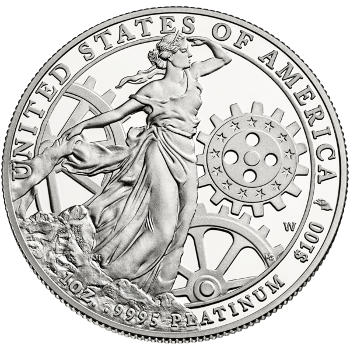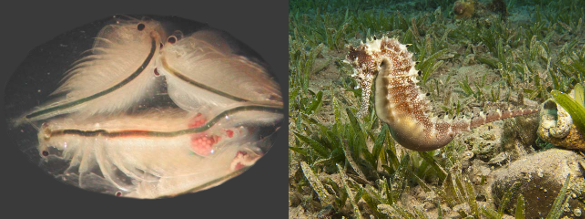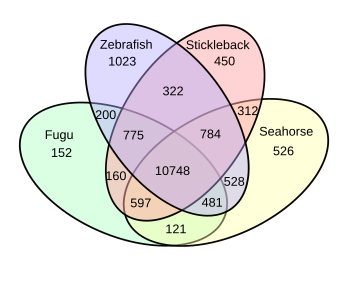Seahorse Genome
January 12, 2017
As a
child, I enjoyed reading
comic books, especially those having an
outer space theme. In those days, comic books sold for just a
dime, but there was a local
convenience store that sold used comic books for two
cents, buying your used books for a
penny. Our modern
Commissars of Continual Copyright would object to such a resale and have every child pay the full dime; or, perhaps, a dime each time the comic book was read. Yes, times have changed.
Quite unlike the silly
space operas and
battles with
bug-eyed monsters that we see on the
cable television channels, the stories in these books contained a fair amount of
hard science. I remember a reference to
radio astronomy in one story long before images of the
Mark I telescope of the
Jodrell Bank Observatory became a mainstream item after its
communication with various
spacecraft, including
Pioneer 5.
Perhaps my interest in
metallurgy sprang from my reading the
Metal Men comics. What
young,
male scientist could resist Tina, the
platinum girl? The Metal Men comics were an education in the particular properties of the
metals portrayed.
Lead, for example, was a "
little dense," and
iron was
strong. They could combine to make an
alloy.

A different type of platinum girl. This is the reverse image of an American Platinum Eagle.
The Metal Man, Platinum, is also known as Tina. Tina is likely a contraction of patina, the chemical layer that forms on the surface of a metal.
(Via Wikimedia Commons.)
Many
authors envision the
future as nearly identical to today, but with spacecraft.
Space Cabbie, another comic book feature, was based on the idea that there would be
interplanetary taxi drivers in the 22nd
century. In one story that I remember, the space cabbie thought that a passenger had forgotten a
dangerous package that must be kept
cool. The smudged label, deciphered as "Dangerous, Keep Cool," actually contained the address of his fare, "Dan Crouse, Khip Vool."[1]
While such content may have inspired my becoming a
physical scientist, there was other content in comic books that may have inspired some to study the
life sciences. That content was the
ads for the
Sea-Monkeys. Packets of
cryptobiotic brine shrimp eggs and nutrients produced these
crustaceans when added to
water.
The Sea Monkey name derives from the supposed resemblance of their
tails to those of
monkeys. Individuals of this
hybrid species of
Artemia are not
long-lived, so the Sea Monkeys may have discouraged as many life science careers as they encouraged.
I had always thought that Sea Monkeys were
seahorses, but I find that these animals are quite different. Artemia (Sea Monkeys) are
crustacean arthropods, related to
shrimp,
crab, and
lobster, while seahorses are
fish.

Artemia salina (Sea Monkeys, left) and a seahorse (right). The left image is from the National Oceanic and Atmospheric Administration, and the right image is via Wikimedia Commons.)
The seahorse, whose technical name, Hippocampus, comes from the
Greek words meaning "sea-monster horse," is a strange fish, indeed. Seahorses have a segmented
bony armour, a curled
prehensile tail, the males carry the
female's eggs in a
ventral pouch, and they
swim upright, although not very well. For that reason, they are mostly sedentary, anchored to an object by their curved tail.
How did a strange creature like the seahorse come to be?
Genetic and
homological studies indicate that seahorses are
descended from
pipefish, and they join the pipefish in the
family,
Syngnathidae. The seahorse appears to have
diverged from the pipefish during the
Chattian Age, also known as the Late Oligocene, 23-28 million years ago, to populate new shallow water
environments.
A
research team of 34
scientists from
Germany,
Singapore, and
China have recently
collaborated on a project to elucidate the genetic basis for such evolutionary oddities of the seahorse.[2-4] The results of this study are
published as a cover story in
Nature.[2] The researchers were from the
Chinese Academy of Sciences (Guangzhou, China), the
University of Konstanz (Konstanz, Germany), the
Beijing Genomics Institute (Shenzhen, China),
A*STAR (Singapore),
Huazhong Agricultural University (Wuhan, China),
Ludong University (Yantai, China), and the
National University of Singapore (Singapore).[2] They
sequenced and
analyzed the
genome of the male
tiger tail seahorse (Hippocampus comes), comparing it with that of other bony fish species.

(Seahorse photo, University of Konstanz image by Ralf Schneider.)
One of the most interesting finding was that the unique features of the seahorse evolved quite quickly.[2-3] The analyzed H. comes genome lacks a
calcium-binding phosphoprotein gene, and this likely led to its loss of
mineralized teeth.[2] Seahorses no longer need teeth because they don't chew prey; instead, they suck food from the sea floor through their long snouts.[3-4]
Seahorse
eyes are well developed, and they're capable of moving independently of each other. This enhanced
visual perception, coupled with the fact that they don't need to
hunt, may have resulted in the reduced number of genes
coding for
olfactory sense compared with other fish.[3-4] A gene,
tbx4, that codes for
fins or
hind legs in nearly every
vertebrate is missing from the seahorse's genome.[3]
While seahorses lack these genes, they do possess six copies of a gene called Pastrisacin.[3-4] This is the gene that's associated with male
pregnancy, and they apparently activate the mechanism for release of the baby seahorses from the male brood pouch.[3-4]

A Venn diagram of shared orthologous gene families in the Hippocampus comes seahorse, fugu, zebrafish and stickleback.
(Data from Figure 2a of ref. 2, drawn using Inkscape.)[2)]
One confirmatory experiment done by the research team was to knock-out the tbx4 gene in
zebrafish using the
CRISPER-cas method. As a consequence, the zebrafish showed the same fin-loss as seahorses.[2] This proved that the tbx4 gene is essential to development of those fins.[3]
References:
- Dave Lartigue, "Space Cabby Sunday: Interplanetary Parcel of Peril!" daveexmachina.com, July 19, 2009.
- Qiang Lin, Shaohua Fan, Yanhong Zhang, Meng Xu, Huixian Zhang, Yulan Yang, Alison P. Lee, Joost M. Woltering, Vydianathan Ravi, Helen M. Gunter, Wei Luo, Zexia Gao, Zhi Wei Lim, Geng Qin, Ralf F. Schneider, Xin Wang, Peiwen Xiong, Gang Li, Kai Wang, Jiumeng Min, Chi Zhang, Ying Qiu, Jie Bai, Weiming He, Chao Bian, et al., "The seahorse genome and the evolution of its specialized morphology," Nature, vol. 540, no. 7633 (December 15, 2016), pp. 395-399, doi:10.1038/nature20595. This is an Open Source Article with a PDF file here.
- The galloping evolution in seahorses, University of Konstanz Press Release, December 14, 2016.
- Rachael Lallensack, "The genes that make seahorses so weird," Science, December 14, 2016.
Permanent Link to this article
Linked Keywords: Child; comic book; outer space; theme; dime; convenience store; cent; penny; Digital Millennium Copyright Act; Commissars of Continual Copyright; space opera; battle; bug-eyed monster; cable television channel; hard science fiction; radio astronomy; Lovell Telescope; Mark I telescope; Jodrell Bank Observatory; radio communication; spacecraft; Pioneer 5; metallurgy; Metal Men comic; young; male; scientist; platinum; metal; lead; intellectual disability; dense; iron; strength of materials; strong; alloy; contraction; patina; chemical compound; chemical layer; DC Comics; author; future; Space Cabbie; interplanetary spaceflight; taxicab; taxi driver; century; dangerous goods; dangerous package; cold; cool; physical science; physical scientist; life science; advertising; ad; Sea-Monkeys; cryptobiosis; cryptobiotic; brine shrimp; crustacean; water; tail; monkey; hybrid species; Artemia; life expectancy; long-lived; seahorse; arthropod; Caridea; shrimp; crab; lobster; fish; Artemia salina; National Oceanic and Atmospheric Administration; Wikimedia Commons; Greek language; bone; bony; armour; prehensile tail; female; egg; ventral; aquatic locomotion; swim; gene; genetic; homology; homological; phylogenetics; descend; pipefish; family; Syngnathidae; genetic divergence; Chattian Age; environment; research; scientist; Germany; Singapore; China; collaboration; scientific literature; publish; Nature; Chinese Academy of Sciences (Guangzhou, China); University of Konstanz (Konstanz, Germany); Beijing Genomics Institute (Shenzhen, China); Agency for Science, Technology and Research; A*STAR (Singapore); Huazhong Agricultural University (Wuhan, China); Ludong University (Yantai, China); National University of Singapore (Singapore); DNA sequencing; sequence; analysis; analyze; genome; tiger tail seahorse (Hippocampus comes); Hippocampus barbouri; evolutionary adaptation; Ralf Schneider; centrin; calcium-binding phosphoprotein; tooth; mineralized teeth; eye; visual perception; predation; hunt; molecular genetics; coding; olfaction; olfactory sense; T-box; tbx4; fish fin; hindlimb; hind leg; vertebrate; pregnancy; Venn diagram; sequence homology; orthology; orthologous gene families; fugu; zebrafish; stickleback; inkscape; CRISPER-cas.